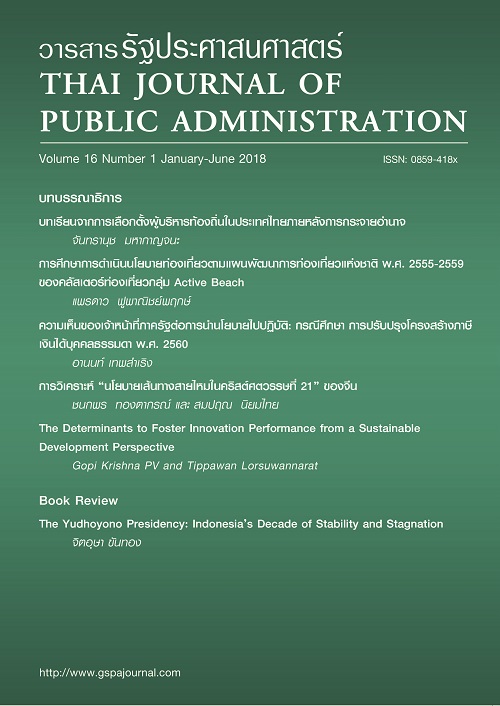Local Elections after Decentralization in Thailand: Lessons Learned
Keywords:
Local elections, local executives, decentralizationAbstract
This article investigates the level of competitiveness among candidates running for local executive positions in Thailand, utilizing local election data gathered from the Office of the Election Commission of Thailand. The analysis covers local elections in provincial administrative organizations, municipalities, and tambon administrative organizations between 2012–2014. The article also provides a brief analysis of the data on the causes of local elections between 2007–2013 (other than regular circumstances such as finishing terms or local unit upgrading) and voter turnout in local elections between 2008–2013.
The data make clear that a much higher percentage of local elections between 2012–2014 had more than one candidate running for local executive positions, while the number of local units with only one candidate decreased. The highest percentage of local units with two or more candidates were located in the northern, northeastern, and southern regions. When viewed by gender of all candidates, female candidates had a higher proportion of winners where there were three or four candidates running for local executive positions. The data also show that local elections in tambon administrative organizations and tambon-level municipalities tended to exhibit higher levels of competitiveness among candidates than in more metropolitan areas (such as provincial administrative organizations or city-level municipalities). Voter turnout in local executive elections was also on the rising trend, with the highest level in the area of tambon administrative organizations.


